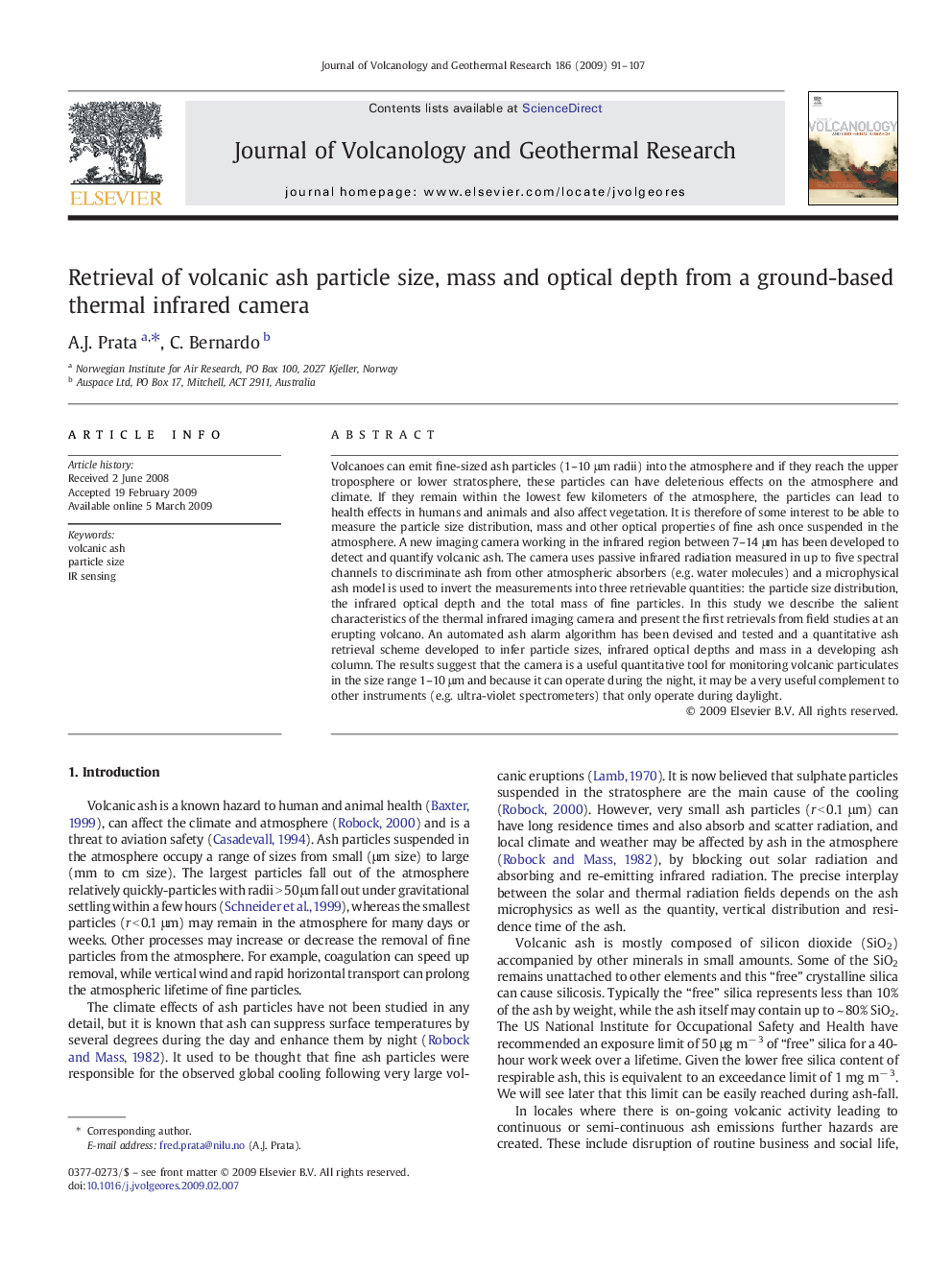| Article ID | Journal | Published Year | Pages | File Type |
|---|---|---|---|---|
| 4713219 | Journal of Volcanology and Geothermal Research | 2009 | 17 Pages |
Volcanoes can emit fine-sized ash particles (1–10 μm radii) into the atmosphere and if they reach the upper troposphere or lower stratosphere, these particles can have deleterious effects on the atmosphere and climate. If they remain within the lowest few kilometers of the atmosphere, the particles can lead to health effects in humans and animals and also affect vegetation. It is therefore of some interest to be able to measure the particle size distribution, mass and other optical properties of fine ash once suspended in the atmosphere. A new imaging camera working in the infrared region between 7–14 μm has been developed to detect and quantify volcanic ash. The camera uses passive infrared radiation measured in up to five spectral channels to discriminate ash from other atmospheric absorbers (e.g. water molecules) and a microphysical ash model is used to invert the measurements into three retrievable quantities: the particle size distribution, the infrared optical depth and the total mass of fine particles. In this study we describe the salient characteristics of the thermal infrared imaging camera and present the first retrievals from field studies at an erupting volcano. An automated ash alarm algorithm has been devised and tested and a quantitative ash retrieval scheme developed to infer particle sizes, infrared optical depths and mass in a developing ash column. The results suggest that the camera is a useful quantitative tool for monitoring volcanic particulates in the size range 1–10 μm and because it can operate during the night, it may be a very useful complement to other instruments (e.g. ultra-violet spectrometers) that only operate during daylight.
